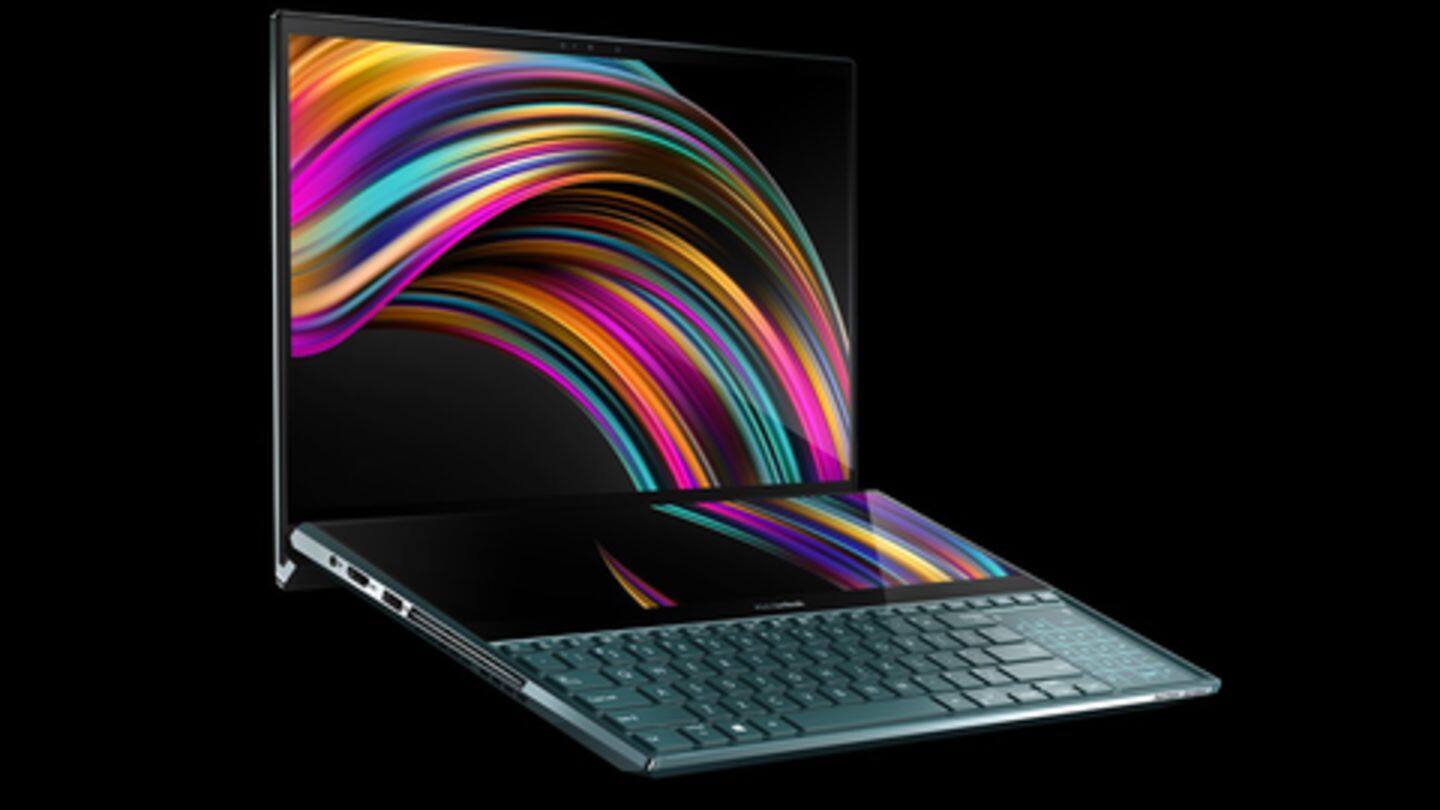
Computex 2019: These mind-blowing dual-screen laptops are here to stay
What's the story
Over the years, laptops have evolved more in terms of power and performance but less in terms of design, functionality. Yes, we have seen some crazy form factors, like Lenovo's Yoga series or 2-in-1s, but that's just it. Nothing has improved radically. Well, this was until Computex, where we witnessed some mind-blowing dual-screen laptops coming to the fore. Here's all about them.
Explanation
What are dual screen laptops?
Back in 2016, Apple embraced the idea of a secondary display with its touch bar-equipped MacBook Pro. The tech did well, but now, it's going on steroids. Basically, laptop-makers have started bundling bigger secondary displays with their notebooks for additional functions, along with regular use on the primary panel. This seems like an interesting feature, which is being implemented in a range of ways.
Laptop #1
First, HP showcased Omen X 2S
Just days before Computex, HP made its move with the launch of Omen X 2S, a pure gaming laptop that comes with a 6-inch secondary display. The panel rests above the keyboard and offers gamers a way to stream videos on YouTube, mirror and zoom in on main screen elements or simply run any app. It works like a desktop with two monitors connected.
Laptop #2
ASUS scaled the secondary screen up
After HP, ASUS, which celebrated its 30th anniversary this year, debuted Zenbook Pro Duo - a laptop boasting a 14-inch-wide 4k secondary display along with the main 15-inch panel. This particular notebook not just enables additional functions with the secondary display - like HP's Omen - but also extends the content of the main display into the secondary one with a window management software.
Information
ASUS also offers secondary 'screenpad' on some notebooks
Zenbook Pro Duo is one-of-a-kind, but this is not the first time ASUS has experimented with secondary displays. Since last year, the company has shown several laptops with 'ScreenPad' - a display-embedded trackpad that offers adaptive functions and quick access to different utilities.
Laptop #3
However, Intel was the one that stole the show
While ASUS, HP displayed consumer-ready products, Intel stole the show with its own vision of a dual-screen laptop - Honeycomb Glacier. This concept machine integrates two displays - a 15.6-inch panel and a 12.3-inch display - with two hinges, giving you a giant laptop in which you first have to open the bigger display, then raise it upwards to bring the second display up.
Twitter Post
And, eye-tracking keep you in control of both screens
AND the ergonomics in action pic.twitter.com/R3jHK3Bca4
— Daniel Van Boom (@dvanboom) May 29, 2019
Information
Intel also showcased Twin Rivers dual-screen laptop
Along with Honeycomb Glacier, Intel also showcased 'Twin Rivers' dual-screen laptop prototype. This machine combines two 12.3-inch displays (connected with central hinge) and works in laptop, book, or tent mode. One can use a virtual keyboard or Bluetooth-connected one to write on this notebook.
Software
Now, the future relies on Microsoft
The unveiling of these dual-screen devices clearly shows that hardware makers are innovating in the PC segment. However, all these designs and dual-screen concepts won't take off unless Microsoft offers Windows with an interface that could adjust according to different form-factors, screens. Some reports have indicated that the company is working on Windows Lite OS for dual-screen devices but nothing is confirmed till now.